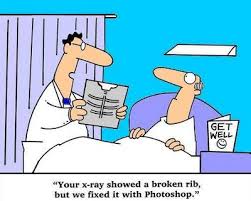- Privacy Policy
- Terms & Conditions
- Contact us
- ©Isabel Healthcare 2025
Online Symptom Checkers - What do they really do for consumers?
 Several recent publications and articles have referred to online symptom checkers as tools that help consumers self-diagnose, and some even further suggest that these tools should recommend self-treatment as an alternative to seeking professional care. As consumers become more engaged and informed about their healthcare and, in turn, healthcare organizations and providers drive consumers to be more engaged, consumers are turning to the to the internet to get health or condition information. Framing the conversation correctly for consumers and more accurately representing online symptom checkers is a necessity if we are to embrace the future of medical care.
Several recent publications and articles have referred to online symptom checkers as tools that help consumers self-diagnose, and some even further suggest that these tools should recommend self-treatment as an alternative to seeking professional care. As consumers become more engaged and informed about their healthcare and, in turn, healthcare organizations and providers drive consumers to be more engaged, consumers are turning to the to the internet to get health or condition information. Framing the conversation correctly for consumers and more accurately representing online symptom checkers is a necessity if we are to embrace the future of medical care.
How to Use a Symptom Checker like Isabel
Online symptom checkers provide a valuable resource for consumers. They are brilliant at educating consumers on possible diagnoses for their symptoms, and giving information on diagnoses that they may have received from their healthcare provider. However, symptom checkers cannot talk to a patient. They only have some of the information about the consumer and the consumer’s symptoms. They can’t touch, feel or look the patient in the eyes. These are critical elements for diagnosing conditions, and while some online tools attempt to ask many questions to collect more information, they are still missing the vital element that goes into diagnosing: human conversation. The primary use of an online symptom checker like Isabel is to produce a list of possibilities based on the known symptoms entered, and connect consumers with a variety of physician resources to assist with diagnosis. This information can then lead to a subsequent interaction, a conversation, with a healthcare provider and ultimately a proper diagnosis.
A Note on Triage Tools
A second benefit of some online symptom checkers is the triage tool. After providing many possible diagnoses, the tool is able to assist consumers in seeking the appropriate care, directing them to the recommended place e.g. urgent care, emergency room, call their doctor. For the reasons stated above, this triage function can be a little tricker. It tends to take a broader view of the patient’s state, suggesting further treatment based on the worst case scenario, not just one diagnosis on the list. Generally, it can be effective in getting the consumer to the correct venue of care, but, again because the tool is not a human, it tends to air on the side of caution. If the tool allowed the consumer to pick their own diagnosis from the list and run the triage tool from there, the consumer then risks missing a more serious diagnosis that would require more urgent attention.
Online tools do have the ability to collect enough information from a consumer about their current symptoms and other broad health categories to recommend a where to seek care, but In the end online their main priority should be to educate and inform the consumer around diagnoses, treatments and cost effective care selections. They should be used by consumers as a second opinion, to then have meaningful dialogue with their healthcare provider, and to seek appropriate care or treatment. Providers diagnose and treat, these tools, like other resources, are there to assist.
Run your symptoms through our Isabel Symptom Checker and Triage Tool, for a second opinion:

Don Bauman
Don has over 30 years of experience working in the healthcare industry. He has led sales and marketing activities in organisations such as InformMed, LMS Medical and Cereplex Inc. before coming to Isabel in 2010.
Subscribe Here!
Recent Posts
Isabel DDx Companion with ChatGPT Integration - to help you diagnose even faster
At Isabel Healthcare, we’ve always been driven by one goal: to make clinical reasoning faster,..Virtual Triage: Do more questions lead to better patient outcomes?
One of the common misconceptions related to virtual triage / symptom checker tools is that the more..List Of Categories
- Differential Diagnosis Decision Support
- Differential diagnosis
- Symptom Checker
- Symptoms
- Medical Error
- Patient Disease Information
- Disease
- Clinical Decision Support
- Diagnostic Decision Support
- Isabel 1 Minute Read
- Diagnosis Error
- Diagnosis Skills Cases
- Healthcare Informatics
- Clinical Reasoning
- Evidence-based Medicine
- Medical Education
- Patient Engagement
- Symptom Triage
- Nurse Practitioner Education
- Nursing Decision Support
- Partnership
- Public Health
- COVID-19
- EHR
- Patient Empowerment
- Patient Safety
- rare disease

Start your FREE Trial today
Try the Isabel Pro DDx generator for 30-days - no payment card details required.




